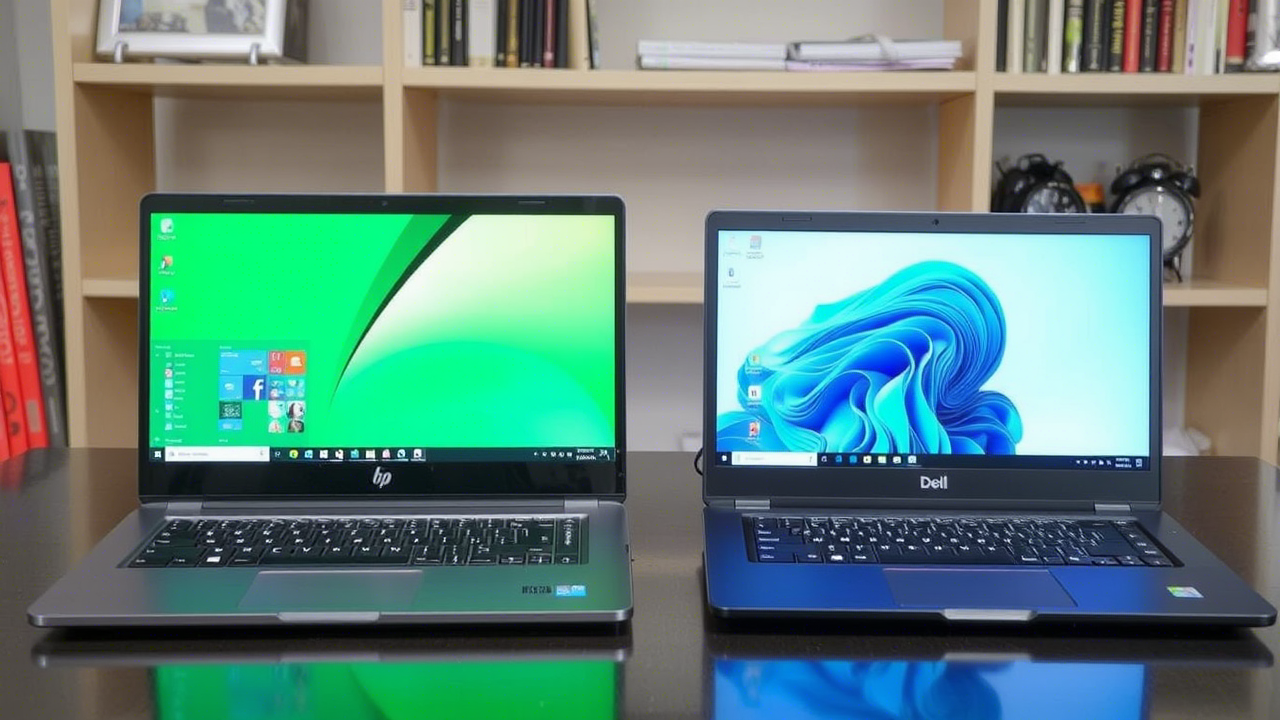HP Envy vs. Dell Inspiron Desktops: A Calm Comparison
HP Envy vs. Dell Inspiron Desktops: A Calm Comparison
Choosing a desktop computer can feel like a big decision, but it doesn’t have to be overwhelming. Two popular options, the HP Envy and Dell Inspiron desktops, offer reliable performance for a variety of needs, from home office tasks to casual gaming and creative projects. In this post, we’ll explore the key differences and similarities between these two lines, helping you find the right fit for your lifestyle with a clear and relaxed perspective.

Design and Aesthetics
When it comes to design, both HP Envy and Dell Inspiron desktops bring distinct vibes to the table. The HP Envy desktop, particularly models like the Envy All-in-One, leans toward a sleek, modern look. Its elegant lines and premium finishes make it a standout in any office or living space. For example, the HP Envy 34 All-in-One boasts a stunning 34-inch ultrawide 5K display, perfect for those who value style and screen real estate. It’s designed to blend functionality with a touch of sophistication, ideal for creative professionals or anyone who appreciates a polished setup.
On the other hand, the Dell Inspiron desktop, such as the Inspiron 24 All-in-One, prioritizes practicality with a more understated design. Its clean, compact form factor fits well in smaller spaces, and while it may not scream “luxury,” it’s functional and versatile. The Inspiron’s design is straightforward, with options like a 24-inch 1080p display that gets the job done for everyday tasks like browsing, streaming, or working on spreadsheets. If you’re looking for a no-fuss, space-saving option, the Inspiron delivers.
Performance and Specifications
Performance is where these desktops show their true colors, and both HP Envy and Dell Inspiron offer configurations to suit a range of needs. The HP Envy desktops typically come with powerful processors, such as 13th-generation Intel Core or AMD Ryzen options, paired with ample RAM (up to 32GB in some models) and SSD storage ranging from 256GB to 2TB. This makes the Envy a great choice for multitasking, video editing, or even light gaming, especially when equipped with dedicated graphics cards like NVIDIA GeForce options. The Envy’s focus on high-resolution displays also enhances tasks like photo editing or watching high-definition content.
The Dell Inspiron desktops, meanwhile, are built for reliability and versatility. With processor options ranging from Intel Core i3 to i7 or AMD equivalents, and RAM configurations from 8GB to 32GB, they handle everyday tasks with ease. Storage options include both SSDs (256GB to 1TB) and HDDs, offering flexibility for users who need more space for files. While the Inspiron can support dedicated graphics, it’s generally better suited for casual users or students rather than heavy creative workloads. For example, the Inspiron 24 AIO is praised for its balance of performance and affordability, making it a solid pick for home offices or schoolwork.
Features and Usability
Both desktops come with features that enhance the user experience, but they cater to slightly different priorities. The HP Envy stands out with its premium touches, like the 16-megapixel detachable webcam on the Envy 34 All-in-One, which is great for video calls or content creation. Its Bang & Olufsen-tuned speakers deliver crisp, immersive sound, and the large, high-resolution display is a boon for multitasking or creative projects. However, some models, like the Envy 34, lack a touchscreen, which might be a drawback for users who prefer interactive displays.
The Dell Inspiron, by contrast, focuses on practical features. Many Inspiron models, such as the Inspiron 24 AIO, offer optional touchscreens, which can be handy for navigating or casual use. The Inspiron also includes a pop-up webcam for privacy and dual speakers with Dolby Atmos for decent audio quality. Its port selection is robust, supporting a variety of peripherals, which is ideal for users who need to connect multiple devices. While it may not have the same premium flair as the Envy, the Inspiron’s features are well-suited for straightforward, day-to-day use.
Price and Value
Price is often a deciding factor, and here, the two brands take different approaches. HP Envy desktops tend to be pricier, reflecting their premium design and features. For instance, the HP Envy 34 All-in-One starts at a higher price point due to its 5K display and advanced components. This makes it a worthwhile investment for those who need top-tier performance and a visually stunning setup, but it might stretch budgets for casual users.
Dell Inspiron desktops, on the other hand, are generally more budget-friendly. Models like the Inspiron 24 AIO start at around $750, offering solid performance for the price. Dell’s custom-order options also allow you to tailor the specs to your budget, whether you need a basic setup for web browsing or a more robust machine for multitasking. If affordability and flexibility are your priorities, the Inspiron is hard to beat.
Which One Is Right for You?
Deciding between an HP Envy and a Dell Inspiron desktop comes down to what you value most. If you’re drawn to a stylish, high-performance machine with a gorgeous display and premium features, the HP Envy is a fantastic choice. It’s perfect for creatives, professionals, or anyone who wants a desktop that feels like a centerpiece. However, if you’re looking for a reliable, cost-effective option that handles everyday tasks without breaking the bank, the Dell Inspiron is a practical and dependable pick.
Take a moment to consider your needs—whether it’s screen size, processing power, or budget—and explore specific models within each line. Both HP and Dell offer a range of configurations, so you’re likely to find a desktop that feels just right. Whichever you choose, you’ll be getting a machine designed to make your daily tasks smoother and more enjoyable.